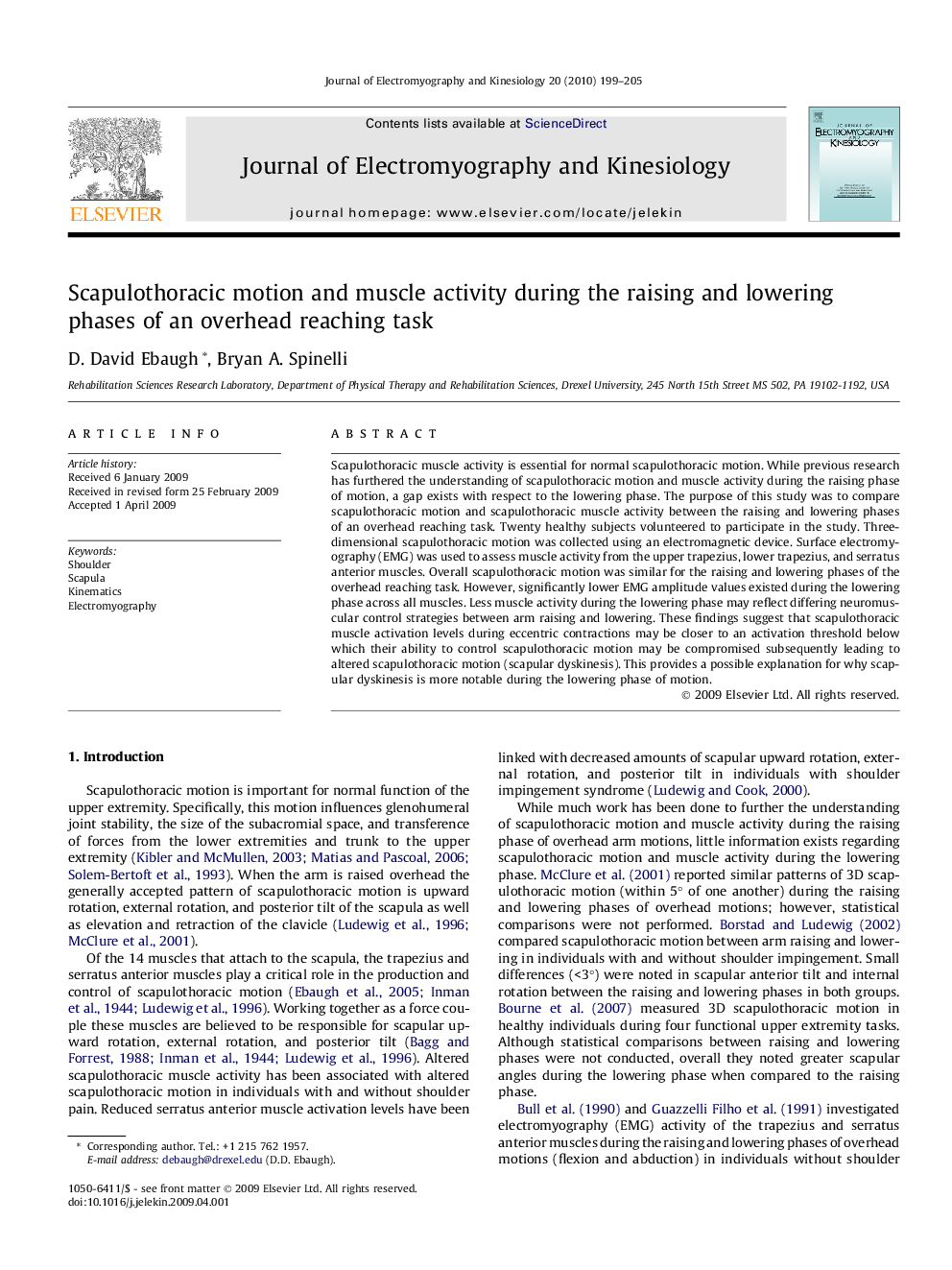| Article ID | Journal | Published Year | Pages | File Type |
|---|---|---|---|---|
| 4065279 | Journal of Electromyography and Kinesiology | 2010 | 7 Pages |
Scapulothoracic muscle activity is essential for normal scapulothoracic motion. While previous research has furthered the understanding of scapulothoracic motion and muscle activity during the raising phase of motion, a gap exists with respect to the lowering phase. The purpose of this study was to compare scapulothoracic motion and scapulothoracic muscle activity between the raising and lowering phases of an overhead reaching task. Twenty healthy subjects volunteered to participate in the study. Three-dimensional scapulothoracic motion was collected using an electromagnetic device. Surface electromyography (EMG) was used to assess muscle activity from the upper trapezius, lower trapezius, and serratus anterior muscles. Overall scapulothoracic motion was similar for the raising and lowering phases of the overhead reaching task. However, significantly lower EMG amplitude values existed during the lowering phase across all muscles. Less muscle activity during the lowering phase may reflect differing neuromuscular control strategies between arm raising and lowering. These findings suggest that scapulothoracic muscle activation levels during eccentric contractions may be closer to an activation threshold below which their ability to control scapulothoracic motion may be compromised subsequently leading to altered scapulothoracic motion (scapular dyskinesis). This provides a possible explanation for why scapular dyskinesis is more notable during the lowering phase of motion.
